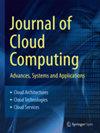Data Augmentation for Tensor Completion via Embedding Gradient Tracking
IF 3.7
3区 计算机科学
Q2 COMPUTER SCIENCE, INFORMATION SYSTEMS
Journal of Cloud Computing-Advances Systems and Applications
Pub Date : 2023-07-01
DOI:10.1109/CSCloud-EdgeCom58631.2023.00044
引用次数: 0
Abstract
How can we enhance the performance of neural tensor completion models for sparse data recovery? The task of tensor completion is crucial for network monitoring since it is the basis of network operation and management. Neural tensor completion models can exploit the multi-dimensional structure of tensors to recover missing entries in partially observed tensors. However, they can produce inaccurate estimations as real-world tensors are very sparse. These models tend to overfit a small amount of data, leading to limited accuracy on recovered data. In this paper, we propose LightTracker, a general data augmentation framework that enhances the prediction accuracy of neural tensor completion models. Specifically, LightTracker first trains a neural tensor completion model and tracks the gradient from the view of embeddings. After training, we use the tracked entity gradient to determine the importance of unknown tensor entries. Then, we aggregate the entries’ importance to calculate the importance of each entity. Finally, LightTracker creates an augmented tensor by mixing observed data and predicted entries with the highest importance. Experiments conducted on two network traffic datasets show that LightTracker effectively enhanced the imputation accuracy of different tensor completion baselines, showing its generality and effectiveness.基于嵌入梯度跟踪的张量补全数据增强
如何提高神经张量补全模型在稀疏数据恢复中的性能?张量补全任务是网络运行管理的基础,对网络监控至关重要。神经张量补全模型可以利用张量的多维结构来恢复部分观测张量中的缺失项。然而,它们可能产生不准确的估计,因为真实世界的张量非常稀疏。这些模型倾向于过拟合少量数据,导致恢复数据的精度有限。在本文中,我们提出LightTracker,一个通用的数据增强框架,提高神经张量补全模型的预测精度。具体来说,LightTracker首先训练一个神经张量补全模型,并从嵌入的角度跟踪梯度。训练后,我们使用跟踪的实体梯度来确定未知张量条目的重要性。然后,我们汇总条目的重要性来计算每个实体的重要性。最后,LightTracker通过混合观测数据和最重要的预测条目来创建增强张量。在两个网络流量数据集上进行的实验表明,LightTracker有效地提高了不同张量补全基线的补全精度,显示了其通用性和有效性。
本文章由计算机程序翻译,如有差异,请以英文原文为准。
求助全文
约1分钟内获得全文
求助全文
来源期刊

Journal of Cloud Computing-Advances Systems and Applications
Computer Science-Computer Networks and Communications
CiteScore
6.80
自引率
7.50%
发文量
76
审稿时长
75 days
期刊介绍:
The Journal of Cloud Computing: Advances, Systems and Applications (JoCCASA) will publish research articles on all aspects of Cloud Computing. Principally, articles will address topics that are core to Cloud Computing, focusing on the Cloud applications, the Cloud systems, and the advances that will lead to the Clouds of the future. Comprehensive review and survey articles that offer up new insights, and lay the foundations for further exploratory and experimental work, are also relevant.
 求助内容:
求助内容: 应助结果提醒方式:
应助结果提醒方式:


